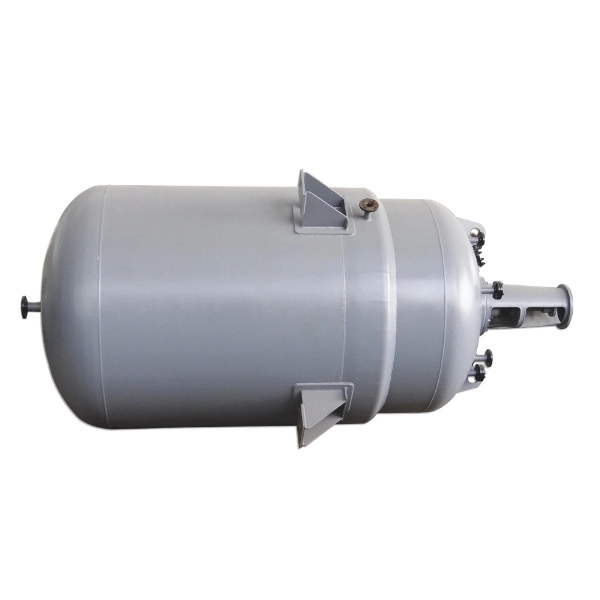Maximizing Efficiency with High-Performance Mixing Reactors in Industrial Processes

A mixing reactor is a critical component in modern chemical, pharmaceutical, and food industries, where precision, consistency, and reliability are essential. The role of this equipment extends far beyond simple stirring. A properly engineered mixing reactor ensures uniform blending of raw materials, controlled heat and mass transfer, and safe handling of reactions under pressure or temperature extremes. Companies across the globe depend on advanced mixing reactors to increase product yield, reduce cycle time, and maintain stringent quality standards. Whether in batch production or continuous processing, the mixing reactor serves as the heart of the operation, where raw inputs transform into high-value end products.

Core Functions of a Mixing Reactor
The true performance of a mixing reactor is not judged solely by how well it stirs materials but by how effectively it integrates a wide range of engineering functions into a single, reliable unit. A high-quality mixing reactor is designed to handle complex industrial requirements, ensuring that processes run smoothly, efficiently, and safely.
-
Homogenization of Materials:One of the fundamental roles of a mixing reactor is to guarantee that raw ingredients are thoroughly combined. In chemical and pharmaceutical production, even the smallest inconsistency in material distribution can compromise product performance or safety. By creating uniform mixtures without localized concentrations, the mixing reactor ensures reliable quality for every batch.
-
Heat Transfer Management:Many industrial reactions are sensitive to temperature. Exothermic reactions release heat rapidly, while endothermic reactions absorb it. Without precise temperature control, reaction conditions may become unstable. A mixing reactor is equipped with advanced heat transfer systems, such as cooling jackets, internal coils, or external heat exchangers, that regulate temperature in real time. This allows manufacturers to maintain optimal conditions, preventing runaway reactions and improving reaction efficiency.
-
Mass Transfer Optimization:In multi-phase processes—whether liquid–liquid extraction, gas–liquid fermentation, or solid–liquid suspensions—efficient mass transfer is essential. A mixing reactor enhances interfacial contact between phases, accelerating reaction kinetics and improving overall yields. This function is especially critical in industries like biotechnology and petrochemicals, where maximizing conversion rates and minimizing raw material usage are top priorities.
-
Shear Control:Different production processes demand different shear environments. A pharmaceutical suspension may require gentle mixing to avoid damaging delicate molecules, while polymer production often benefits from strong shear forces to break down aggregates. The mixing reactor can be tuned to provide the right balance of shear intensity, making it a versatile solution across multiple applications.
-
Scalability:From laboratory research to full-scale industrial operations, scalability is one of the most valuable features of a mixing reactor. A well-designed system ensures that results obtained during pilot studies can be replicated at commercial volumes without compromising quality. This consistency reduces the risks associated with technology transfer and helps bring new products to market faster.
By integrating all these functions into one system, the mixing reactor serves as the backbone of modern process industries, ensuring that production is efficient, controlled, and compliant with industry standards.
Benefits of Using a High-Quality Mixing Reactor
Choosing a high-quality mixing reactor is not simply about purchasing equipment—it is a strategic investment that directly impacts production efficiency, product quality, and long-term profitability. Businesses across pharmaceuticals, chemicals, food, and specialty materials recognize that the benefits of a reliable mixing reactor extend well beyond the mixing process itself.
-
Process Efficiency:Advanced impeller design, optimized baffles, and smart control systems allow the mixing reactor to achieve rapid and thorough mixing. Faster reaction rates mean reduced production cycle times, higher throughput, and the ability to meet increasing market demand without expanding facility size.
-
Consistent Quality:Uniformity is critical for industries where safety and performance standards are strict. A mixing reactor ensures every ingredient is evenly distributed, preventing product inconsistencies and batch failures. This consistency builds customer trust and minimizes costly recalls or rework.
-
Energy Savings:Energy consumption is a key cost factor in industrial operations. A modern mixing reactor is engineered to reduce power requirements by optimizing fluid dynamics. By minimizing turbulence losses and improving circulation efficiency, the reactor lowers operating costs while supporting environmental sustainability initiatives.
-
Safety and Compliance:Industrial-scale chemical processes involve risks such as pressure surges, volatile compounds, and high temperatures. A well-engineered mixing reactor is built to international safety standards and includes monitoring and control features to detect abnormalities early. This reduces operator risk, prevents accidents, and ensures compliance with strict global regulations.
-
Flexibility:A single mixing reactor can be adapted to process multiple formulations with different viscosities, densities, or reaction requirements. This flexibility allows manufacturers to switch between product lines quickly, making it easier to respond to changing customer needs or market trends. For contract manufacturers, this capability can significantly expand their client base.
When viewed together, these benefits highlight why the mixing reactor is considered one of the most critical investments for process industries. From improving efficiency and safety to reducing costs and ensuring compliance, the mixing reactor delivers both technical and economic value. For companies competing in global markets, the advantages of a high-quality mixing reactor translate directly into stronger competitiveness, higher profitability, and long-term customer satisfaction.
In today's highly competitive industrial landscape, the mixing reactor has become more than just a piece of equipment—it is the central hub where innovation, efficiency, and reliability converge. By combining essential functions such as homogenization, heat and mass transfer, shear control, and scalability, a well-designed mixing reactor ensures that every production run meets the highest standards of quality and safety. For businesses in the chemical, pharmaceutical, and food sectors, investing in a high-quality mixing reactor is not only about improving performance today but also about securing long-term growth, flexibility, and global competitiveness. Ultimately, the mixing reactor stands as the heart of modern process industries, transforming raw materials into consistent, high-value products that drive progress and profitability.
https://www.globalkneader.com/reactor
www.globalkneader.com
Nantong Kneading Mixing Machine Co., Ltd
